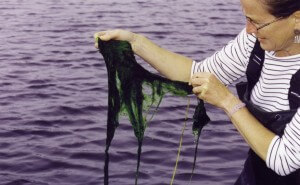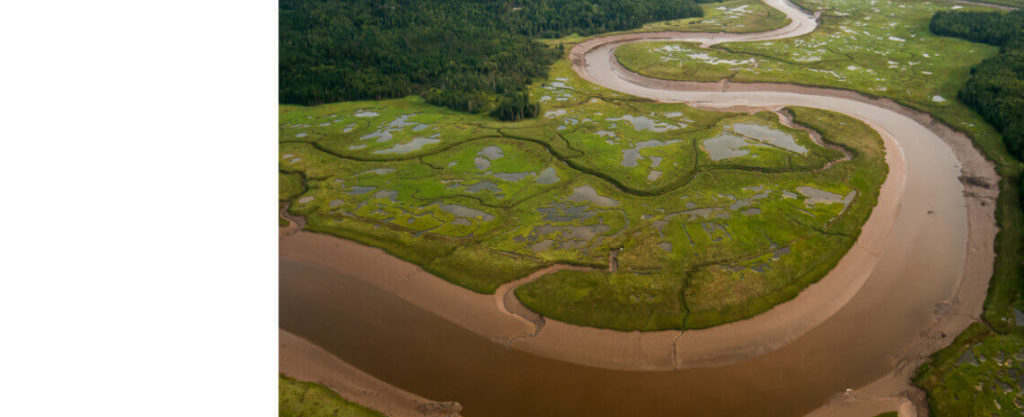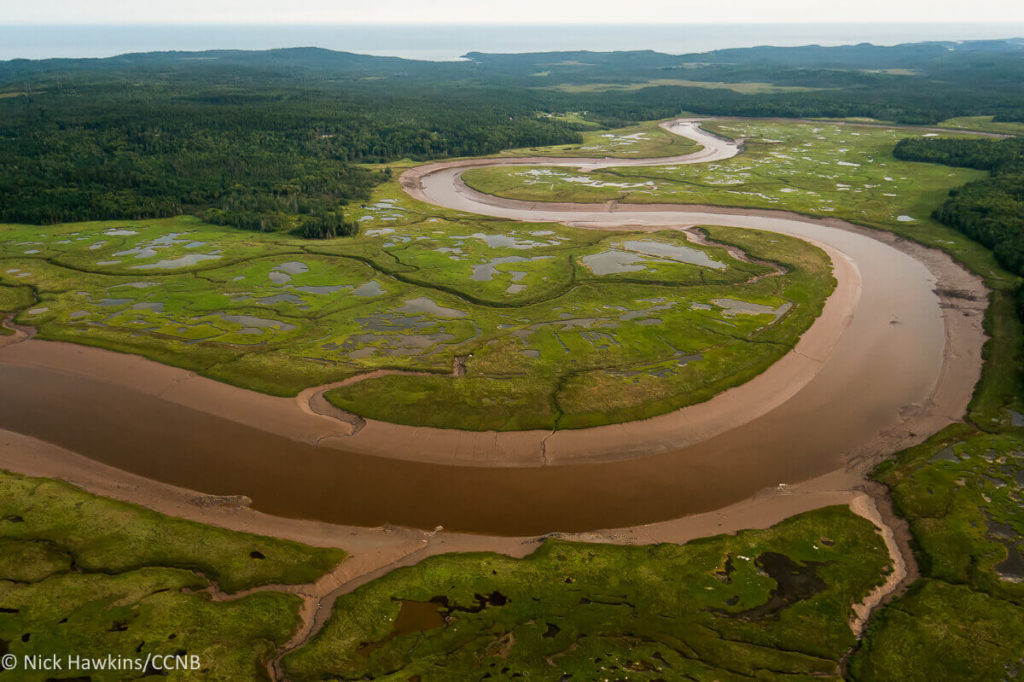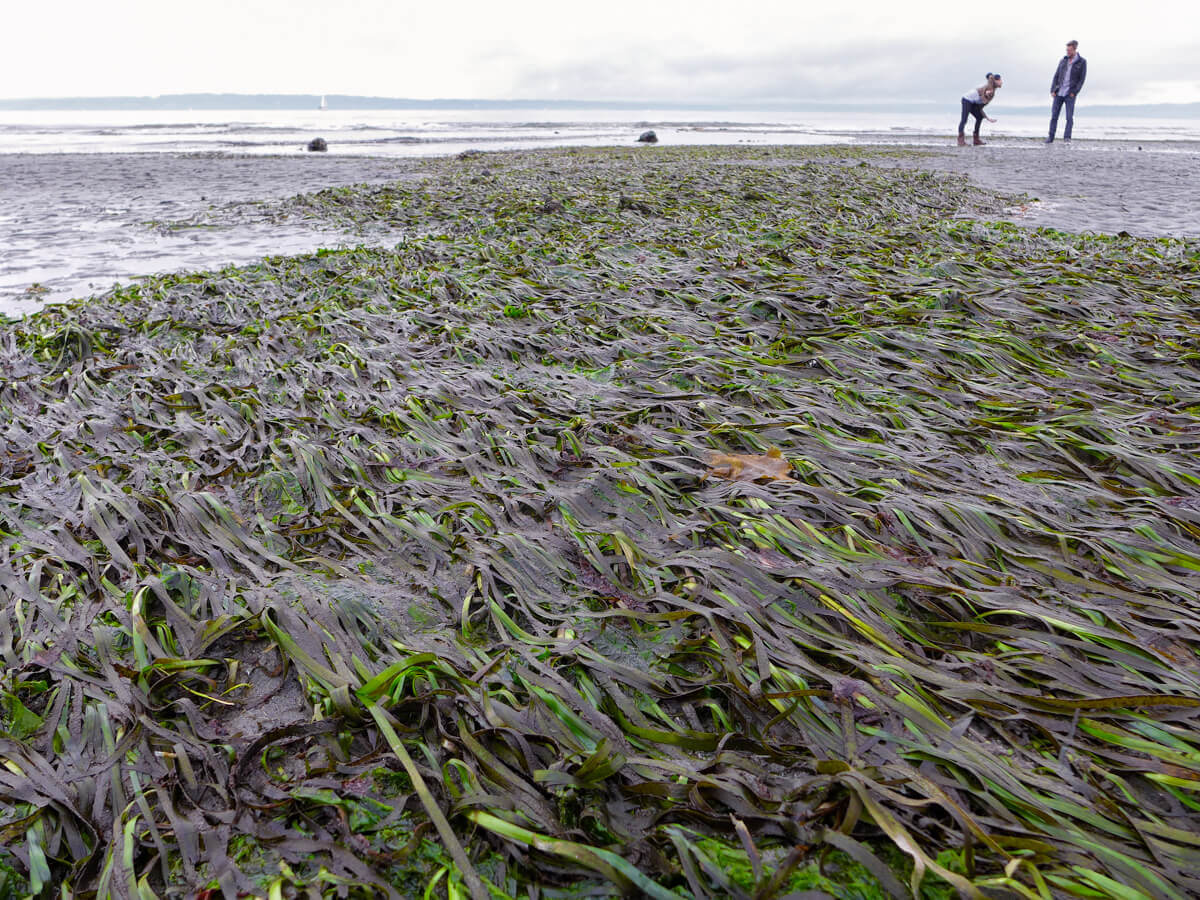Research pioneered by Inka Milewski and the Conservation Council of New Brunswick over a decade ago was expanded recently through a collaboration with Dalhousie University researchers Heike K Lotze and Reba McIver.
The scientists looked at the health of seven estuaries in eastern New Brunswick by examining the level of nitrogen content in eelgrass, an important habitat for many animals, including migratory birds such as the Canada Geese.
The research showed the main contributor of nitrogen in six of the seven estuaries came from airborne pollution that was man-made and likely originated out of central Canada and the U.S. Other contributors to high nitrogen levels include sources from a nearby seafood processor and sewage treatment plant.
Understanding the source of the nitrogen levels in our estuaries is an important piece of proper watershed management and will help prevent the degradation of crucial salt marsh habitat. As airborne pollution from more densely populated areas outside New Brunswick cannot be controlled by our province alone, it is important we maintain healthy riparian buffer zones and protect provincial wetlands to ensure the health of these ecologically-sensitive areas. This work will help decision-makers in our province manage our estuaries more effectively.

Read more on the research below.
The goal of this research was to estimate whether the amount of nutrients entering estuaries along the Northumberland Strait were having a measurable effect on eelgrass habitat. Eelgrass beds are one of the world’s most ecologically important coastal habitats. They provide habitat for a wide range of commercial and non-commercial fish and shellfish species, stabilize muddy and sandy-bottomed bays, and protect the shoreline and homeowners from waves and storm surges. In 2009, DFO classified eelgrass as an Ecologically Significant Species (ESS).
The first part of study estimated the amount of nutrient entering each of the seven estuaries studied. Sources of nutrients, primarily nitrogen, include septic systems, municipal sewage, industrial wastewater, agricultural fertilizers, and deposition from the atmosphere. Using isotope analysis, nitrogen levels in the eelgrass were then measured. Certain sources of nitrogen will produce more nitrogen of a certain isotope than others. For example, wastewater from septic systems or seafood processing plants will have more of the ‘heavy’ nitrogen isotope than chemical fertilizers, indicating human or animal waste.
The results indicate that certain estuaries are receiving more nutrients than others which was also reflected in the isotope characteristics of eelgrass tissues. The Lamèque estuary receives the most nitrogen because of discharges from fish processing facilities. Tabusintac and Kouchibouguac estuaries receive the lowest amounts of nitrogen because of the smaller population in the watershed area and no wastewater or seafood processing facilities drain into the estuary.
According to lead researcher, Reba McIver, “these findings are important because excessive nitrogen in estuaries can lead to algae blooms that, when large enough, can be harmful to eelgrass habitats by blocking sunlight from reaching these underwater plants. If severe enough, eelgrass habitats can completely disappear, which is what has happened in several New England estuaries. This in turn is bad news for all the animals that rely on these habitats.”
Overall, the seven estuaries studied receive less nitrogen than those in New England where eelgrass has disappeared. However the study team recorded more algae and phytoplankton in the estuaries where nitrogen loads were higher (Lamèque, Buctouche, Cocagne), indicating that there are effects of nitrogen inputs in these estuaries.
“This research can aid the Province, towns and local service districts in New Brunswick make better decision on how to manage new and existing sources of nutrients to these estuaries,” said Inka Milewski, CCNB’s science advisor and study team member.
You can read the complete research paper here.



